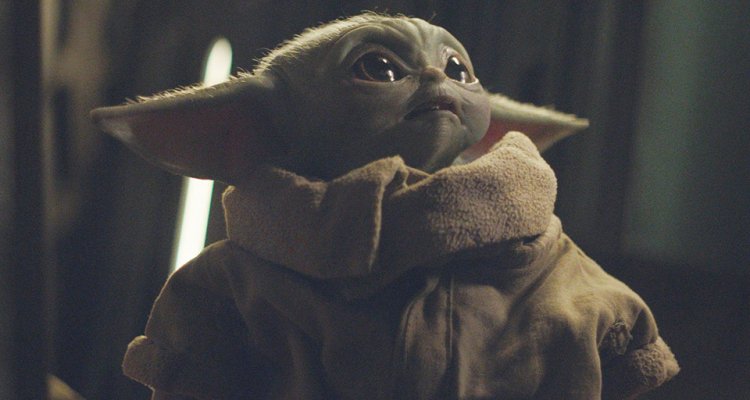If there’s been an overriding criticism for the inaugural season of “The Mandalorian,” it’s that the series felt too episodic, with our central character (Pedro Pascal) hopping from planet to planet, getting into some kind of small-scale skirmish, and moving on to the next adventure. As the relatively short season nears its end, the disparate plot threads are beginning to coalesce, with those stand-alone episodes taking on a new dimension in the context of the latest installment (“Chapter 7: The Reckoning”), the beginning of a truly exciting two-part finale. With one episode to go, things are getting hairy in untamed space.
READ MORE: ‘Star Wars: The Rise of Skywalker’ Is Fan Fiction On A Galactic Scale [Review]
As the episode begins, the Mandalorian gets an incredibly “Star Wars“-y holographic transmission from Greef Karga (Carl Weathers), imploring him to return to Nevarro, the rundown desert planet where the first few episodes took place. He says that if he can assassinate The Client (Werner Herzog), he can square himself with the guild of assassins and keep stewardship of The Child. (It should be noted that the Mandalorian has given The Child his own nickname, The Imp. It’s adorable.) The Mandalorian is skeptical of the arrangement, but if he can get out of his predicament and make a little money while he’s at it, he’s going to at least give it a shot. But of course, he needs help and enlists the assistance of Cara Dune (Gina Carano), the hardened ex-Rebel Shock Trooper introduced in episode four, and Kuiil (Nick Nolte), his ally from the earlier episodes (including episode two’s rip-roaring, Jawa-filled installment). From there, things get decidedly trickier, and if you aren’t slack-jawed at the end of the episode, feverishly excited for next week’s finale, you might want to check your pulse.
As directed by Deborah Chow, who next year will embark on the Obi-Wan Kenobi-focused miniseries starring Ewan McGregor, she gives the episode a nice visual texture (both of the show’s cinematographers are credited, perhaps owing to the complexity of the episode). There’s an interlude where Kuiil explains how he rehabilitated IG-11 (Taika Waititi), the assassin droid from the first episode. It’s a beautifully told flashback, full of humor and heart and a kind of visual shorthand that allows us to process the entire task of reprogramming the formerly bloodthirsty droid in a short amount of time. It’s so elegant and efficient and bodes well for her expanded role in the “Star Wars” universe. Chow also has an uncanny knack to suggest expression and emotion from a host of characters who have no faces (Stormtroopers, The Mandalorian, IG-11); she can somehow wring suspense, danger, and doubt out of slowly pushing in on one of these blank faces. She allows for the unknowing aspect of those empty eyes and that eerie stillness of the expressionless face to really sink in. It’s pretty creepy.
So far, the show has done a terrific job of evoking the spirit of the old school serials that inspired George Lucas on the original films, creating crafty little installments full of big action, high stakes, and edge-of-your-seat cliffhangers. (Some of these mysteries have still been left unanswered, like who was inspecting Ming Na-Wen’s body at the end of Episode 5.) And we’re staying away from spoilers here, but the episode concludes with the series’ biggest, most shocking climax yet, one that has serious repercussions for the finale and potentially beyond. Additionally, there are some new Force-related powers that The Imp exhibits in this episode that directly ties into the events of “Star Wars: The Rise of Skywalker” (our review), releasing later this week. Is it an ingenious example of coordinated storytelling or a cynical bit of cross-platform corporate synergy? Either way, it’s pretty clever and offers some neat insight to devoted fans who are closely watching both productions.
“The Reckoning” serves as the first part of the epic conclusion of the first season and proof that there was some sort of grand design to the initial slate of episodes. For those who have been doubting the show, this should restore some faith. There’s clearly more going on in “The Mandalorian” than just a series of loosely connected stand-alone adventures, and this installment has made that abundantly clear. With characters returning to the fray, an escalation of tension and action, and an ending that is absolutely stunning (packing an unexpected emotional wallop), the season should be ending with a bang. And please, for the love of God, bring Deborah Chow back for Season 2. [A-]

